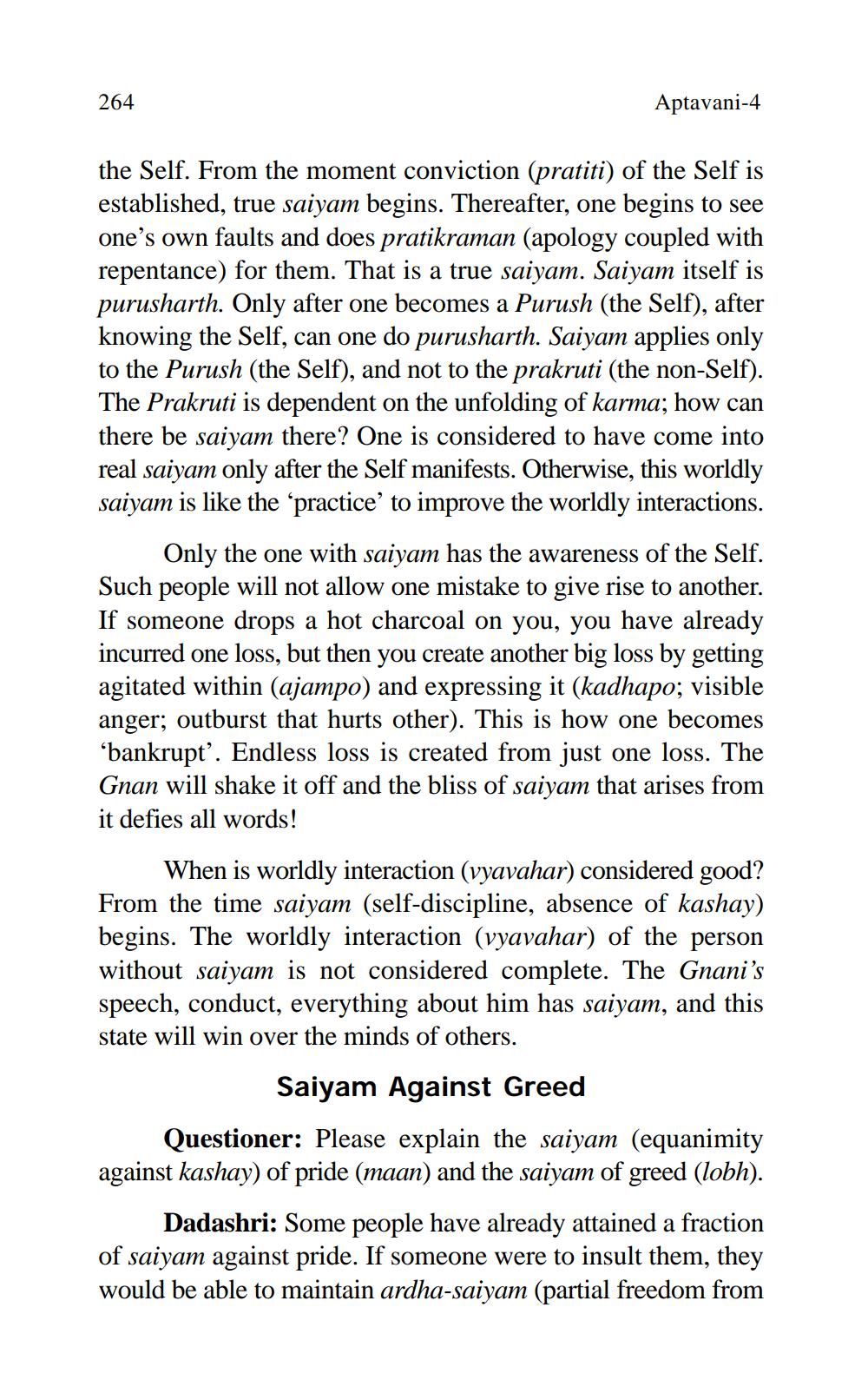________________
264
Aptavani-4
the Self. From the moment conviction (pratiti) of the Self is established, true saiyam begins. Thereafter, one begins to see one's own faults and does pratikraman (apology coupled with repentance) for them. That is a true saiyam. Saiyam itself is purusharth. Only after one becomes a Purush (the Self), after knowing the Self, can one do purusharth. Saiyam applies only to the Purush (the Self), and not to the prakruti (the non-Self). The Prakruti is dependent on the unfolding of karma; how can there be saiyam there? One is considered to have come into real saiyam only after the Self manifests. Otherwise, this worldly saiyam is like the 'practice' to improve the worldly interactions.
Only the one with saiyam has the awareness of the Self. Such people will not allow one mistake to give rise to another. If someone drops a hot charcoal on you, you have already incurred one loss, but then you create another big loss by getting agitated within (ajampo) and expressing it (kadhapo; visible anger; outburst that hurts other). This is how one becomes 'bankrupt'. Endless loss is created from just one loss. The Gnan will shake it off and the bliss of saiyam that arises from it defies all words!
When is worldly interaction (vyavahar) considered good? From the time saiyam (self-discipline, absence of kashay) begins. The worldly interaction (vyavahar) of the person without saiyam is not considered complete. The Gnani's speech, conduct, everything about him has saiyam, and this state will win over the minds of others.
Saiyam Against Greed Questioner: Please explain the saiyam (equanimity against kashay) of pride (maan) and the saiyam of greed (lobh).
Dadashri: Some people have already attained a fraction of saiyam against pride. If someone were to insult them, they would be able to maintain ardha-saiyam (partial freedom from




